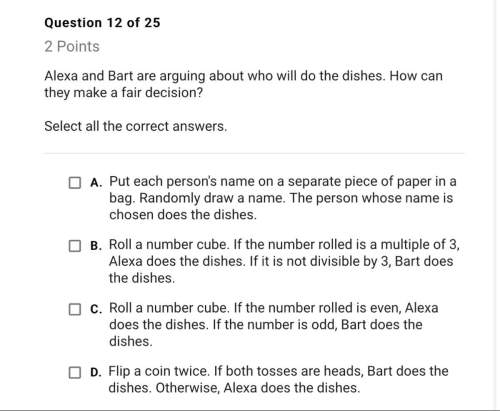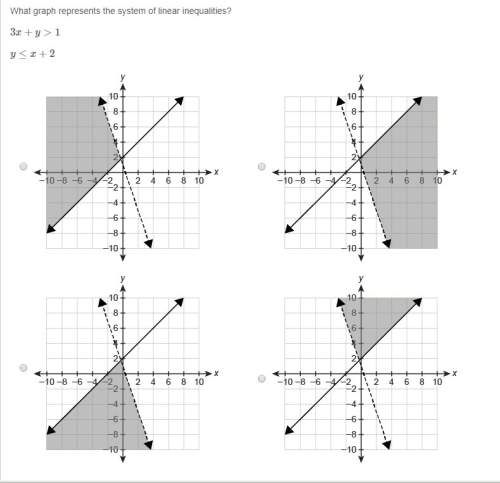
Mathematics, 14.10.2019 22:30 gabbys2002
Given the following definition, compute q(5). q(n) = 0 if n = 0 2 if n = 1 4 if n = 2 q(n − 1) + q(n − 2) + q(n − 3) if n > 2

Answers: 1
Another question on Mathematics

Mathematics, 21.06.2019 12:30
Nparallelogram lmno, what are the values of x and y? x = 11, y = 14 x = 11, y = 25 x = 55, y = 14 x = 55, y = 25n parallelogram lmno, what are the values of x and y? x = 11, y = 14 x = 11, y = 25 x = 55, y = 14 x = 55, y = 25
Answers: 2

Mathematics, 21.06.2019 19:10
Find the roots of the polynomial function f(x) = x^3 + 2x^2 + x
Answers: 2

Mathematics, 21.06.2019 22:00
What is the solution to the system of equation graphed belowa.(0,-4)b.(2,5),1),-3)
Answers: 3

Mathematics, 22.06.2019 00:50
Match the following reasons with the statements given to create the proof. 1. do = ob, ao = oc sas 2. doc = aob given 3. triangle cod congruent to triangle aob vertical angles are equal. 4. 1 = 2, ab = dc if two sides = and ||, then a parallelogram. 5. ab||dc if alternate interior angles =, then lines parallel. 6. abcd is a parallelogram cpcte
Answers: 3
You know the right answer?
Given the following definition, compute q(5). q(n) = 0 if n = 0 2 if n = 1 4 if n = 2 q(n − 1) + q(n...
Questions

Mathematics, 29.05.2021 09:50

Social Studies, 29.05.2021 09:50






Chemistry, 29.05.2021 09:50

Biology, 29.05.2021 09:50



History, 29.05.2021 09:50

English, 29.05.2021 09:50




Mathematics, 29.05.2021 09:50


Chemistry, 29.05.2021 09:50

Mathematics, 29.05.2021 09:50





